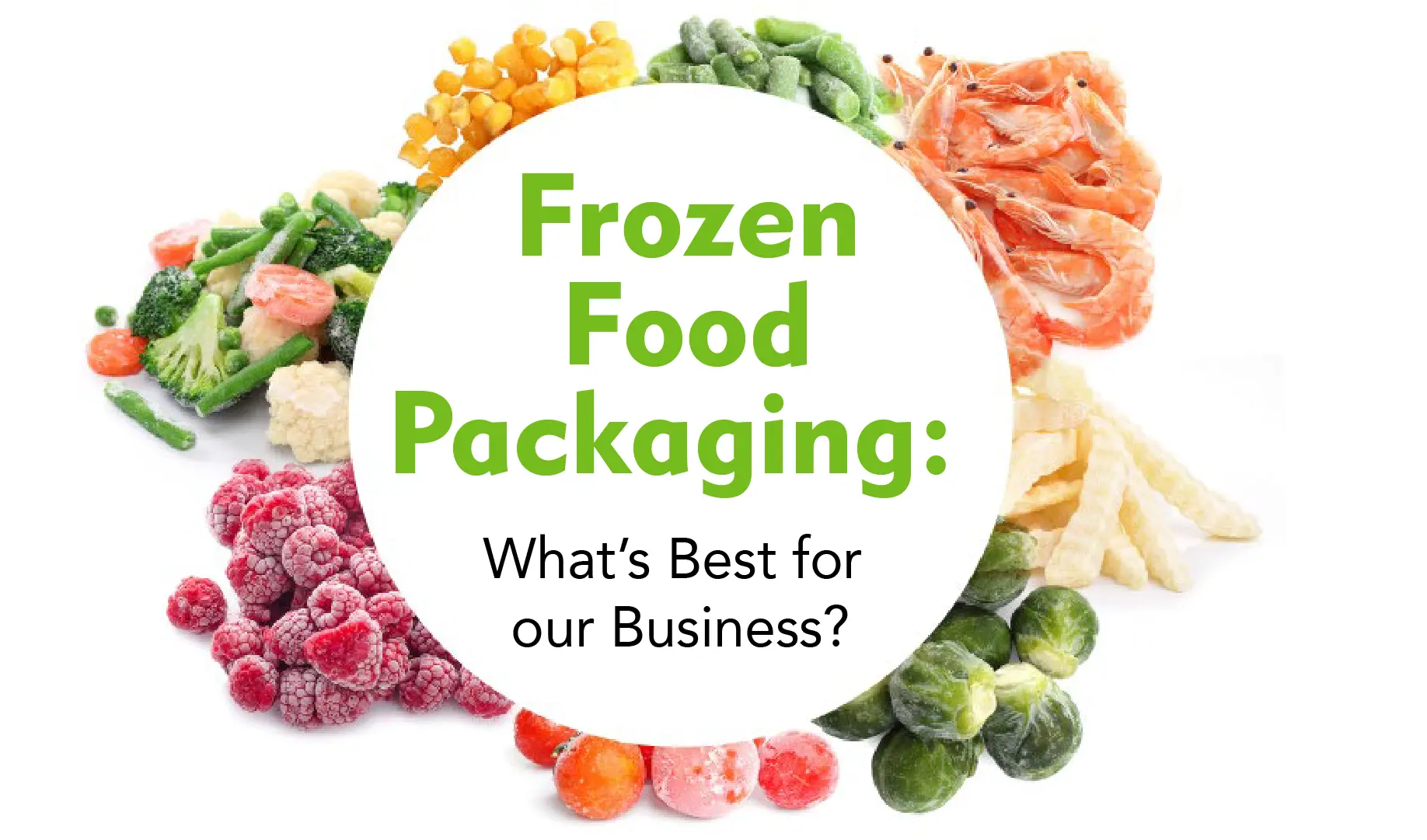How to Choose the Best Frozen Food Packaging Materials for Your Products
When it comes to frozen food packaging, there are a few important factors to consider. The packaging must withstand the freezing temperatures, adequately protect the food from freezer burn, and maintain its integrity during transportation and handling. Additionally, the packaging must be made of food-safe materials that are environmentally friendly.
With all of these considerations to keep in mind, how do you know which packaging material is right for your business? Here, we’ll discuss some of the best materials for frozen food packaging and help you come up with
the best solution for your brand.
Types of Frozen Food Packaging
Polyethylene (PE)
Polyethylene is a popular material for frozen food packaging because of its excellent resistance to cold temperatures and its ability to be heat sealed. It’s also a lightweight and cost-effective flexible packaging material, making it a popular choice for many food manufacturers. Polyethylene is available in various forms, including low-density polyethylene (LDPE) and high-density polyethylene (HDPE),
each with unique properties suited for different types of packaging.
Polypropylene (PP)
Polypropylene is another popular material for frozen food packaging due to its high strength and excellent resistance to cold temperatures. It’s also microwaveable, making it a versatile option for consumers who want to heat up their food quickly. Additionally, this material is recyclable, which makes it an eco-friendly option for food manufacturers looking to reduce their carbon footprint.
Polystyrene (PS)
Polystyrene is a rigid plastic material often used for frozen food packaging because of its excellent insulation properties. You might see this type of packaging used for ice cream pails, for example. Polystyrene is lightweight and cost-effective, making it a popular choice for many food manufacturers.
Chipboard
Commonly referred to as cardboard, chipboard is a widely used packaging option for frozen foods. A sturdy and durable material, it can package anything from pies to pizzas and more. However, chipboard is not airtight and will allow moisture to escape from food, causing freezer burn. Therefore, cardboard boxes usually incorporate some sort of flexible packaging to keep the food fresh.
What Type of Packaging is Right for Your Business?
While this isn’t an exhaustive list of all types of frozen food packaging, the above options are some of the most popular choices for food manufacturers. However, flexible packaging — polyethylene, specifically — will likely be the best choice for your organization. Not only does it offer fantastic protection from the elements, but it’s also a sustainable choice, which can benefit your brand image.
More and more consumers are looking for brands to step up their sustainability efforts, and flexible packaging helps you do just that. Polyethylene is fully recyclable, which promotes a circular economy. Flexible packaging can also be made of post-consumer recycled materials, which greatly benefits the environment. You can also combine polyethylene and post-consumer recycled materials in the same blend, further enhancing your sustainability efforts.
Get the Right Fit with PPC Flexible Packaging
When you need quality custom packaging, turn to PPC Flexible Packaging. Based in Buffalo Grove, Illinois, we are a high-quality flexible packaging manufacturer. Our team goes above and beyond to understand your needs and conceptualize the perfect packaging for your specific application. From design to final product, we’ve got you
covered.
When you work with us, you won’t just benefit from our extensive experience and helpful team. You’ll also benefit from our speed-to-market capabilities, which can help you get your products to consumers as soon as possible. Additionally, we offer sterilizable packaging, should you need that option. Let’s Make Something Great Together Ready to see what we can do for you? Reach out to our team here.
